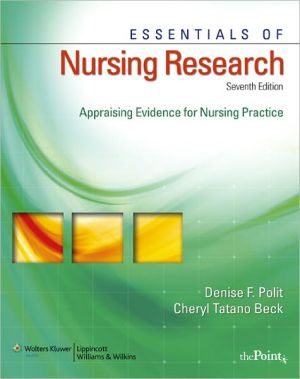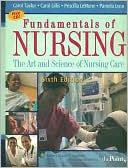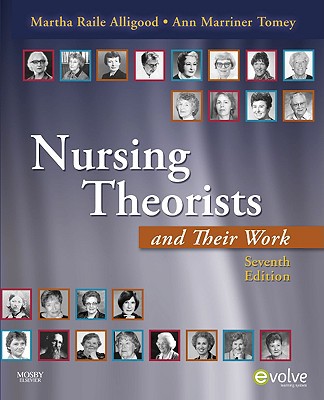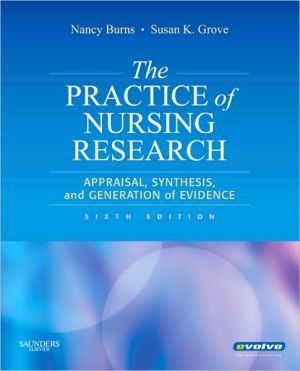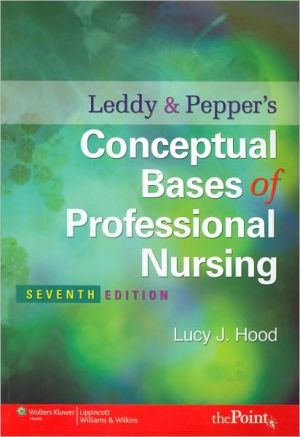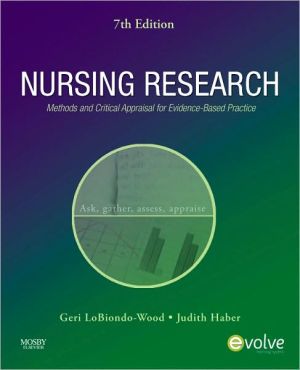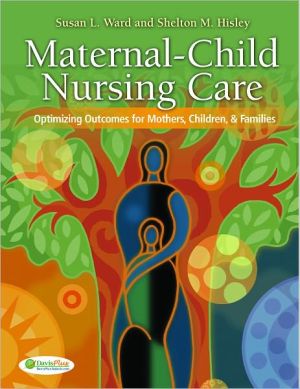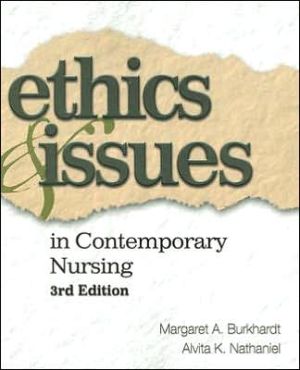Essentials of Nursing Research: Appraising Evidence for Nursing Practice
Essentials of Nursing Research is designed to teach students how to read, understand, analyze, and evaluate research reports in nursing practice. The Seventh Edition has been updated with stronger coverage of evidence-based practice, including content on how to read, interpret, and critique systematic reviews, which are considered by many to be a cornerstone of evidence-based practice. Also included in the Seventh Edition: a more balanced presentation of medical and social science methods and...
Search in google:
Essentials of Nursing Research is designed to teach students how to read, understand, analyze, and evaluate research reports in nursing practice. The Seventh Edition has been updated with stronger coverage of evidence-based practice, including content on how to read, interpret, and critique systematic reviews, which are considered by many to be a cornerstone of evidence-based practice. Also included in the Seventh Edition: a more balanced presentation of medical and social science methods and nomenclature; enhanced coverage of qualitative research; and more. Doody Review Services Reviewer:Diane M Tomasic, EdD, RN(Slippery Rock University )Description:The seventh edition of this book continues its focus on reading and critiquing research reports with an emphasis on facilitating understanding of research and fostering interest in research. Purpose:The purpose is to explain the essentials of reading and critiquing research. This is an essential skill especially with the emphasis on evidence-based practice.Audience:This book is most suitable for undergraduate nursing students learning to read and critique research studies. The authors have numerous research publications in addition to research texts to their credit.Features:For this edition, there have been many changes and additions. There is a stronger emphasis on evidence-based practice and the chapter on the fundamentals of evidence-based practice is now the second chapter. There is a new chapter on reading and critiquing systematic reviews and the student study guide includes a report on an evidence-based project. The content on qualitative research has been expanded and includes a chapter on trustworthiness and integrity of qualitative research. Since nurses use research from other disciplines, research terminology and methodology has been expanded to familiarize readers with terminology specific to various disciplines. The key features and ancillaries to this edition are the same as previous editions. New are two full critiques on the CD-ROM and the Point for students to use as models. The student study guide contains seven research studies to provide more opportunity for critiquing. There is an ancillary teaching-learning package for students and instructors (upon adoption of the text). The Point (online) gives readers access to learning objectives, Internet resources, answers to critical thinking activities, and self-study review questions. The CD-ROM also contains student resources. Upon approval, the instructor can gain access to instructor resources, which include test generator questions, PowerPoint presentations, strategies for effective teaching, and the instructor manual.Assessment:This book continues to be valuable for undergraduate nursing students learning to read and critique research. (It is not intended to prepare an individual to conduct research; the authors have a research methods text for that purpose.) The authors have removed the mystery of research and produced a very user-friendly book. The stronger emphasis on EBP has made this edition necessary.
Pt. 1 Overview of Nursing Research and its Role in Evidence-Based PracticeIntroduction to Nursing Research in an Evidence-Based Practice EnvironmentEvidence-Based Nursing Practice: FundamentalsKey Concepts and Steps in Qualitative and Quantitative ResearchReading and Critiquing Research ReportsEthics in ResearchPt. 2 Preliminary Steps in the Appraisal of EvidenceResearch Problems, Research Questions, and HypothesesLiterature Reviews: Finding and Reviewing Research EvidenceTheoretical and Conceptual FrameworksPt. 3 Designs for Nursing ResearchQuantitative Research DesignsQualitative Designs and ApproachesSpecific Types of ResearchSampling PlansPt. 4 Data CollectionData Collection MethodsMeasurement and Data QualityPt. 5 Data Analysis and InterpretationStatistical Analysis of Quantitative DataRigor and Interpretation in Quantitative ResearchAnalysis of Qualitative DataTrustworthiness and Integrity in Qualitative ResearchSystematic Reviews: Meta-analysis and MetasynthesisAppendicesA The Relationships among Anxiety, Anger, and Blood Pressure in ChildrenB The Anniversary of Birth TraumaIndex
\ From The CriticsReviewer: Diane M Tomasic, EdD, RN(Slippery Rock University )\ Description: The seventh edition of this book continues its focus on reading and critiquing research reports with an emphasis on facilitating understanding of research and fostering interest in research. \ Purpose: The purpose is to explain the essentials of reading and critiquing research. This is an essential skill especially with the emphasis on evidence-based practice.\ Audience: This book is most suitable for undergraduate nursing students learning to read and critique research studies. The authors have numerous research publications in addition to research texts to their credit.\ Features: For this edition, there have been many changes and additions. There is a stronger emphasis on evidence-based practice and the chapter on the fundamentals of evidence-based practice is now the second chapter. There is a new chapter on reading and critiquing systematic reviews and the student study guide includes a report on an evidence-based project. The content on qualitative research has been expanded and includes a chapter on trustworthiness and integrity of qualitative research. Since nurses use research from other disciplines, research terminology and methodology has been expanded to familiarize readers with terminology specific to various disciplines. The key features and ancillaries to this edition are the same as previous editions. New are two full critiques on the CD-ROM and the Point for students to use as models. The student study guide contains seven research studies to provide more opportunity for critiquing. There is an ancillary teaching-learning package for students and instructors (upon adoption of the text). The Point (online) gives readers access to learning objectives, Internet resources, answers to critical thinking activities, and self-study review questions. The CD-ROM also contains student resources. Upon approval, the instructor can gain access to instructor resources, which include test generator questions, PowerPoint presentations, strategies for effective teaching, and the instructor manual.\ Assessment: This book continues to be valuable for undergraduate nursing students learning to read and critique research. (It is not intended to prepare an individual to conduct research; the authors have a research methods text for that purpose.) The authors have removed the mystery of research and produced a very user-friendly book. The stronger emphasis on EBP has made this edition necessary.\ \
